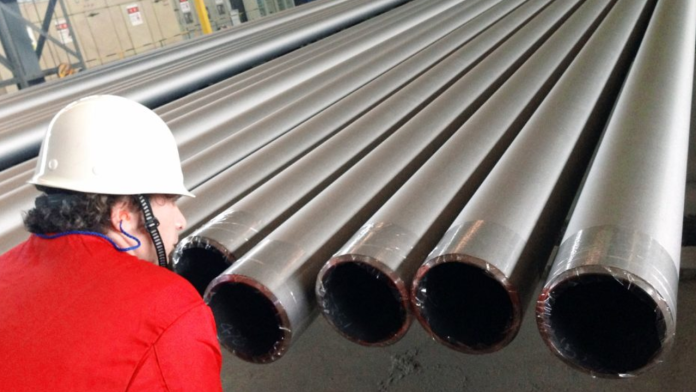Rectangular HSS and square HSS are two widely used styles of hollow structural sections in the construction industry, known for their electricity, versatility, and aesthetic enchantment. These tubular steel sections are normally hired in structural programs consisting of beams, columns, and help frameworks. Even though both sorts share similar material properties, their variations in shape and structural conduct cause them to be suitable for awesome programs.
RHS, with its elongated profile, is regularly chosen for load-bearing systems where strength is needed alongside a specific axis. SHS offers a symmetrical form, making it perfect for projects that require balanced electricity in all directions. Knowing the important differences between Rectangular HSS (RHS) & Square HSS (SHS): is crucial for architects, engineers, and production specialists who need to select the most suitable phase based on factors like load distribution, design flexibility, material performance, and usual structural requirements.
Key Differences between Rectangular HSS and Square HSS in Terms of Structural Applications
Hollow structural sections are a famous preference in the construction enterprise, especially inside the shape of square HSS and square HSS. These tubular steel sections are used notably in structural programs because of their strength, versatility, and aesthetic attraction. While each RHS and SHS offer similar material properties, their structural applications vary based on form, load distribution, and other factors. Expertise in those key differences is vital for deciding on the proper phase for precise projects.
Shape and Load Distribution in Structural Applications
One of the greatest differences between square HSS (RHS) and square HSS (SHS) lies in their form and the way they influence load distribution. Square sections have an extended measurement in a single direction, which permits for higher load-bearing ability in that course. This makes RHS perfect for beams, columns, and cargo-bearing partitions where forces are concentrated alongside one axis. However, SHS, with its symmetrical form, provides uniform load distribution in all directions, making it suitable for packages requiring balanced electricity, consisting of vertical columns and support systems.
Flexibility in Design and Aesthetic Considerations
The form of each RHS and SHS additionally plays a role in the classy layout of homes. Rectangular HSS (RHS) is frequently favored for modern-day architectural designs due to its elongated profile, which can be used to create sleek, linear visual effects. It offers extra flexibility while used as horizontal or vertical factors in structural frames. Square HSS (SHS), however, is extra visually sturdy and symmetrical, making it a famous desire for structures that want uniformity and balanced layout elements. Architects regularly pick between those shapes based totally on the visual impact they need to create further to the structural necessities.
Structural Efficiency and Material Usage
Another key difference between square HSS (RHS) and square HSS (SHS) is their efficiency in material utilization. Square HSS sections generally tend to apply less material in evaluation to rectangular sections when designed for beams or supports, because the longer side of the rectangle can bear more load with less steel. In assessment, square HSS (SHS) tends to require greater material for equal strength, specifically while load-bearing potential is wanted along a specific axis. Consequently, selecting between RHS and SHS can directly impact material fees and general structural efficiency in huge-scale tasks.
Weight Considerations in Structural Design
Weight is a critical component in the structural design of any mission, and that is some other vicinity in which rectangular HSS (RHS) and square HSS (SHS) vary. Typically, square HSS sections weigh more than rectangular HSS sections of identical material thickness due to the same facet lengths. For initiatives where minimizing weight is important—inclusive of lengthy-span roof systems or excessive-rise homes—RHS may also offer an extra lightweight answer without compromising power. This weight difference can lead to tremendous financial savings in fabric transportation and set-up fees, specifically in large-scale creation.
Connection and Joint Design
The layout of connections and joints is another vital consideration when choosing between square HSS (RHS) and rectangular HSS (SHS). Rectangular sections, due to their unequal facets, provide greater sincere joint designs while connecting beams and columns. This may simplify the fabrication manner, as the longer aspects permit for simpler bolting or welding. Square HSS sections, however, are extra challenging to connect due to their equal dimensions, requiring more tricky joint designs. In some instances, SHS joints may additionally require extra reinforcement to maintain structural integrity, which could increase both complexity and cost.
Availability and Standard Sizes
When choosing between square HSS (RHS) and square HSS (SHS), availability and general sizes are also important factors. Both varieties of HSS are extensively available, but rectangular HSS offers more variety in size alternatives because of its asymmetric form. This presents designers with extra flexibility to pick unique dimensions for unique structural needs. Square HSS sections, while available in many well-known sizes, may not provide the same stage of customization as their rectangular counterparts. The choice among the two regularly comes right down to the specific size and form requirements of the venture.
Remarks
The choice between square HSS (RHS) and square HSS (SHS) comes right down to a spread of things, along with load distribution, material performance, aesthetic considerations, and cost. Square HSS gives advantages in applications wherein the load-bearing capability is focused alongside one axis, at the same time as square HSS presents uniform strength in all guidelines, making it perfect for compression programs. By way of understanding these key variations, architects and engineers could make informed choices to optimize the structural overall performance and fee effectiveness in their projects.












